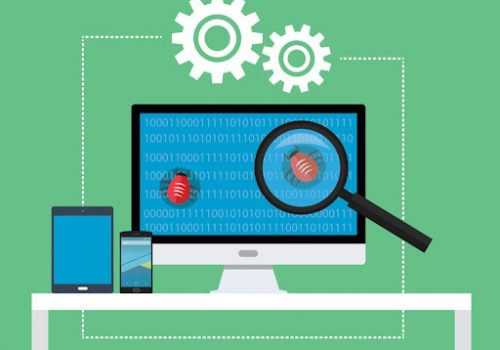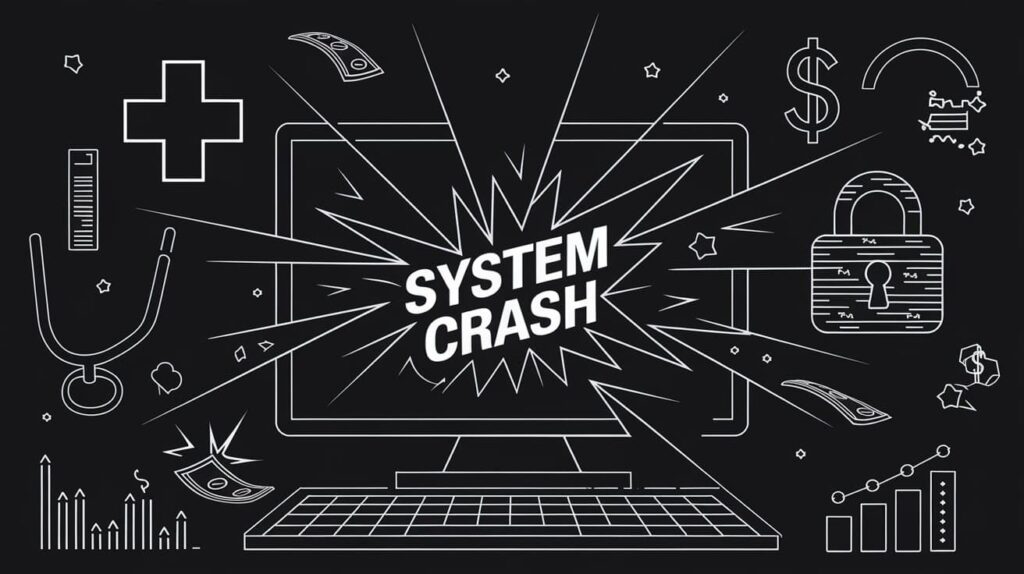I once used an app that crashed every time I tried to save my work, causing me to lose hours of progress. What seemed like a small bug became incredibly frustrating and time-consuming. That experience showed me how even minor software defects can have a big impact on daily tasks.
The impact of software defects is never trivial. Even small bugs can cause serious issues like crashes, security risks, or data loss. Addressing defects is crucial to ensure smooth and safe software performance.
Introduction To The Impact Of Software Defects Is Always Trivial
The consequences of software defects can ripple through various aspects of technology and daily life, making their impact anything but trivial. What may seem like a minor bug at first glance can evolve into a cascade of issues, leading to unexpected crashes, security loopholes, or even faulty outputs that mislead users.In the corporate world, these defects can cause a domino effect—resulting in financial setbacks, tarnished reputations, and a decline in customer loyalty.
In high-stakes industries such as healthcare and transportation, the implications are even more severe, where software failures can jeopardize lives and public safety. Therefore, it’s crucial to recognize that every defect, no matter how seemingly insignificant, has the potential to escalate into a larger crisis, underscoring the urgent need for vigilant monitoring and swift resolution.
What Are The Effects Of Software Defects?
The belief that the impact of software defects is always trivial may be common, but the truth is that even minor flaws can lead to serious problems. These defects can cause programs to crash, resulting in data loss and a frustrating experience for users. While they might seem minor at first, unchecked defects can create security vulnerabilities, making systems easier targets for cyberattacks.

In critical fields like healthcare or finance, even a small mistake can have severe consequences, potentially endangering lives or causing significant financial losses. Moreover, when users frequently encounter bugs and glitches, it can harm a company’s reputation and drive customers away. Ultimately, the idea that the impact of software defects is always trivial is misleading; the hidden effects can be quite damaging, highlighting the importance of addressing defects quickly and effectively.
What Are The 3 Effects Of Using A Defective Tool?
1. Loss Of Productivity:
Using a defective tool can lead to significant loss of productivity. When tools don’t work properly, tasks take longer to complete, causing delays and frustration. Workers may need to stop frequently to fix issues or switch to alternative tools, which interrupts their workflow. This wasted time not only affects individual performance but can also slow down team progress and impact overall project deadlines.
2. Increased Risk Of Injury:
- Malfunctioning Tools: Defective tools can fail unexpectedly, causing accidents and injuries to users.
- Lack of Control: Using a faulty tool can make it harder to handle, increasing the chances of slips or drops that may hurt someone.
- Inaccurate Results: Tools that don’t function correctly can lead to improper cuts or placements, which might cause accidents later on.
- Inadequate Safety Features: Many defective tools lack essential safety features, putting users at higher risk during operation.
- Increased Fatigue: Struggling with a faulty tool can make tasks more tiring, leading to mistakes and accidents due to exhaustion.
3. Poor Quality Of Work:
- Inconsistent Results: Defective tools can produce uneven or subpar outcomes, making it difficult to achieve quality standards.
- More Errors: When tools malfunction, they often lead to mistakes, requiring additional time and effort to correct them.
- Wasted Materials: Poorly functioning tools can result in damaged materials, leading to unnecessary waste and increased costs.
- Negative Reputation: Delivering work of poor quality due to defective tools can harm a person’s or a company’s reputation, affecting future opportunities.
- Customer Dissatisfaction: When the quality of work suffers, it can lead to unhappy clients or customers who may choose not to return.
How Do You Manage Software Defects?
Managing software defects effectively is crucial to ensuring a smooth user experience and maintaining software quality. It starts with a proactive approach, where developers regularly test their code during the development process to catch issues early.

When a defect is identified, it’s important to document it thoroughly, detailing the circumstances under which it occurred. This helps the development team understand the issue better and prioritize its resolution based on the defect’s severity. After fixing the defect, thorough testing is necessary to confirm that the solution works and does not introduce new problems. Regular updates and communication with users also help keep everyone informed about any ongoing issues and improvements.
1. Key Steps To Manage Software Defects:
- Regular Testing: Conduct frequent tests throughout the development cycle to identify defects early.
- Documentation: Keep detailed records of defects, including their nature, impact, and the steps to reproduce them.
- Prioritization: Assess the severity of each defect and prioritize them for resolution based on their potential impact.
- Effective Communication: Maintain open lines of communication with users and team members to keep everyone updated on defect status and fixes.
- Post-Fix Testing: After addressing a defect, thoroughly test the software again to ensure the fix works and no new issues arise.
How Do You Fix Defects In Software Testing?
1. Identify The Defect:
- Run Tests: Conduct various tests, such as unit tests or integration tests, to find issues in the software.
- Review User Reports: Check feedback and bug reports from users to identify problems they encounter.
- Use Debugging Tools: Utilize software tools that help detect errors and track down defects in the code.
- Monitor Performance: Keep an eye on how the software performs during use to spot any unusual behavior.
- Check Documentation: Review design and requirement documents to ensure the software meets its intended goals, helping to identify deviations.
2. Analyze The Cause:

Analyzing the cause of a software defect involves digging deeper to understand why the issue occurred. This process includes reviewing the code and identifying any errors or logic problems that may have led to the defect. By pinpointing the root cause, developers can ensure that they address the underlying issue and prevent it from happening again in the future.
3. Implement And Test The Fix:
- Make Code Changes: Modify the code to fix the identified defect based on the analysis conducted earlier.
- Conduct Unit Testing: Test the specific section of code where the defect was fixed to ensure it now works correctly.
- Perform Integration Testing: Check how the new changes interact with other parts of the software to ensure everything functions smoothly together.
- Run Regression Tests: Test the entire software to confirm that the fix hasn’t introduced new issues or affected existing features.
FAQ’s
1. What is the real world impact of software failure?
The real-world impact of software failure can be significant, leading to financial losses and damaged reputations for businesses. In critical areas like healthcare or finance, software failures can jeopardize safety, causing serious consequences for users and organizations alike.
2. What is the Difference Between Software Error and Software Defect?
A software error refers to a mistake made by a programmer in the code that causes the software to behave incorrectly. In contrast, a software defect is a broader term that includes any flaw in the software, whether it’s due to an error in the code, design issues, or unmet requirements.
3. Are software developers liable for defects in their software?
Software developers can be held liable for defects in their software, especially if those defects cause harm or financial loss to users. Liability often depends on factors like contracts, warranties, and the level of negligence involved in the development process.
4. What are the symptoms of a faulty process followed in software Development?
Symptoms of a faulty software development process include frequent bugs and defects appearing after each release, along with missed deadlines and poor communication among team members. Additionally, if user feedback is consistently negative, it may indicate deeper issues in how the software is being developed.
5. What is the difference between software defect and issue?
A software defect refers to a specific flaw or error in the code that causes the software to behave incorrectly. In contrast, an issue can be a broader term that includes any problem affecting the software, such as user complaints, performance concerns, or defects that need addressing.
Conclusion:
The consequences of software defects are substantial, impacting both users and businesses in meaningful ways. What may appear as a minor issue can quickly grow into larger challenges that compromise performance and user satisfaction.
Therefore, timely intervention is essential to maintain software reliability and uphold customer trust, ensuring a smoother experience for everyone involved.

